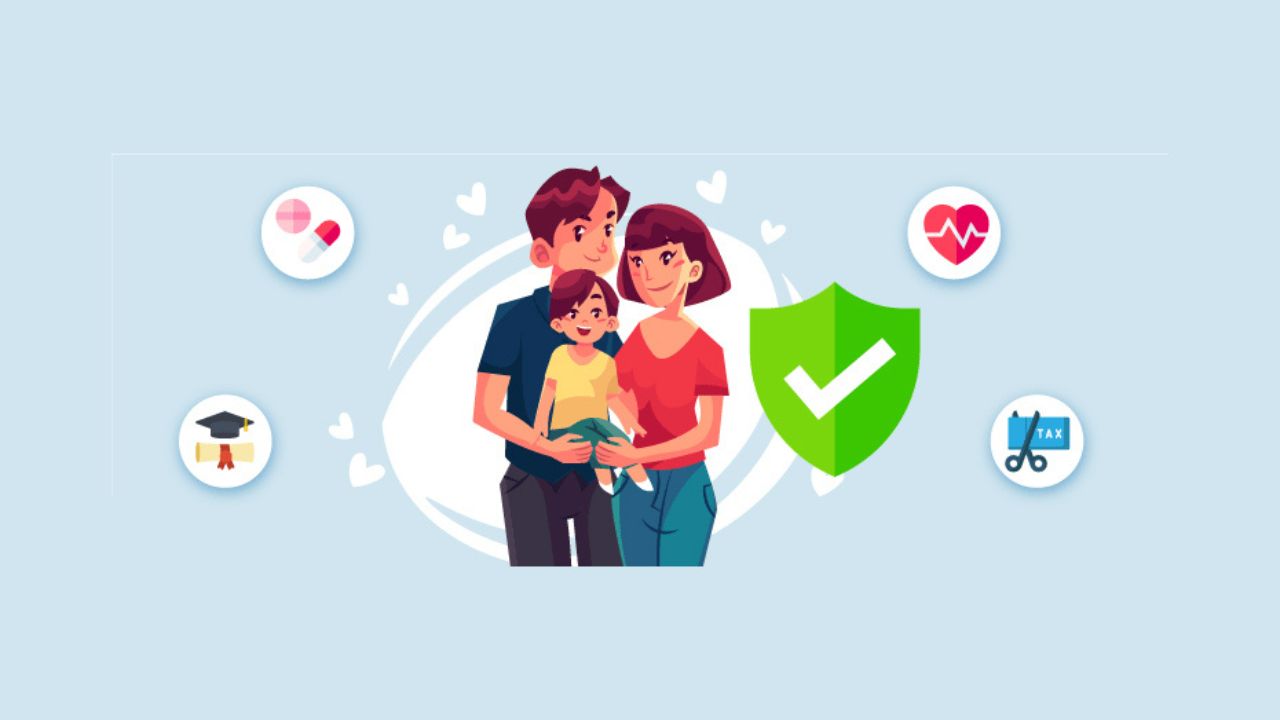Creating a child plan might seem overwhelming, but it’s one of the best things you can do for your child’s future. A child plan encompasses everything from financial planning and education to health and life skills. It ensures that your child has a roadmap to success in their early years and as they grow into adulthood.
Your Child’s Needs
Every child is unique; recognizing this individuality is the cornerstone of effective parenting. Understanding your child’s needs involves observing their behavior, listening to their concerns, and identifying their strengths and weaknesses. This process helps you tailor your approach to effectively support their growth and development.
By staying attuned to your child’s evolving interests, emotional states, and developmental milestones, you can provide the nurturing environment they need to thrive. This personalized understanding fosters a strong parent-child relationship and sets the foundation for your child’s future success and happiness.
Assessing Developmental Stages
Evaluating your child’s developmental stages is crucial for providing the appropriate support and guidance they need at each growth phase. This involves monitoring their physical, emotional, cognitive, and social development from infancy through adolescence. By keeping track of key milestones, you can identify any potential delays or issues early on, ensuring timely intervention and fostering a supportive environment that promotes healthy development and overall well-being.
Identifying Interests and Talents
Recognizing your child’s unique interests and talents is crucial to their development. Please pay close attention to activities that captivate their attention and bring them joy. Whether they show a natural ability in sports, a passion for art, or an affinity for math and science, fostering these interests can help them build confidence and develop essential skills.
Encouraging exploration in various fields will allow them to discover and hone their innate abilities, setting a strong foundation for their future endeavors. Understanding and supporting your child’s passions can lead to lifelong pursuits and achievements, contributing significantly to their happiness and success.
Setting Goals
Establishing clear and achievable goals is essential for guiding your child’s development. These goals provide a roadmap for progress, helping to focus efforts and measure success. Setting short- and long-term objectives ensures a balanced approach to your child’s growth, fostering motivation and a sense of accomplishment.
Short-term Goals
Short-term goals are objectives that can be achieved relatively quickly, typically in a few weeks to a few months. These goals are essential for building momentum and keeping your child motivated. Examples include:
- Improving reading proficiency.
- Mastering a specific math concept.
- Participating in a community sports event.
Short-term goals provide a sense of accomplishment and encourage consistent progress, laying the groundwork for achieving more significant, long-term aspirations. Children learn the value of persistence and effort in achieving their broader objectives by setting and reaching these smaller milestones.
Long-term Goals
Long-term goals are aspirations and objectives that span several years or even decades, providing a vision for your child’s future. These goals include preparing for higher education, fostering a lifelong love of learning, achieving career milestones, or cultivating skills and hobbies to enrich their adult lives.
Establishing long-term goals helps to guide daily actions and decisions, ensuring that they align with a broader vision of success and personal fulfillment. Focusing on long-term aspirations can help your child build a strong foundation for a prosperous and fulfilling future.
Financial Planning for Your Child’s Future
Financial planning for your child’s future involves strategic saving and investing to ensure they have the resources needed for education, emergencies, and major life events. It includes opening savings accounts, exploring various investment options, and consistently contributing to these funds to build a secure financial foundation that supports their long-term goals and aspirations.
Savings Accounts
Savings accounts are a secure way to save money for your child’s future. They offer steady interest rates and easy access to funds. Options include traditional savings accounts, high-yield savings accounts for better returns, and custodial accounts (UTMA/UGMA), which transfer ownership to your child when they reach adulthood. Start early to maximize growth through compound interest, ensuring a solid financial foundation.
Investment Options
Investment options for your child’s future include 529 College Savings Plans for education, Custodial Accounts (UTMA/UGMA) for asset transfers, and Roth IRAs for kids with earned income. Savings Bonds offer low-risk growth, while mutual funds and ETFs provide diversified investments. Consider life insurance for protection and setting up trusts for inheritance management. Always review and adjust investments as needed.
Education Planning
Education planning involves:
- Saving early with 529 College Savings Plans.
- Considering Custodial Accounts (UTMA/UGMA).
- Exploring scholarships and grants.
Set clear goals, create a budget, and regularly review your plan. Teach your child financial literacy to prepare them for managing education expenses.
Early Childhood Education
Early childhood education is crucial for cognitive, social, and emotional development. Quality programs focus on play-based learning, fostering curiosity and creativity. Key benefits include improved language skills, better academic performance, and socialization. Early education lays the foundation for lifelong learning and success. Enroll your child in preschool programs and engage in educational activities at home to support their growth.
Primary and Secondary Education
Primary and secondary education lays the foundation for lifelong learning. Primary education focuses on basic literacy, numeracy, and social skills. Secondary education builds on this, introducing more complex subjects like science, mathematics, and humanities, preparing students for higher education or vocational training. Both stages are crucial for developing critical thinking, problem-solving abilities, and social interactions, shaping well-rounded individuals.
Higher Education and Beyond
Planning for higher education and beyond includes saving in 529 College Savings Plans, applying for scholarships, and considering student loans. Teach financial literacy to manage expenses and explore internships for career readiness. Post-graduation, focus on repaying student debt, building an emergency fund, and investing in retirement accounts. Encourage continuous learning and career development to ensure long-term financial stability.
Health and Wellness
Prioritize health and wellness by maintaining regular medical checkups, a balanced diet, and exercise. Ensure comprehensive health insurance coverage. Teach healthy habits early, including mental well-being practices. Invest in preventive care and create an emergency fund for unexpected medical expenses.
Regular Checkups
Regular checkups are crucial for maintaining good health. Schedule annual physical exams with your primary care physician to monitor overall well-being, blood pressure, cholesterol levels, and vaccinations. Dental checkups every six months promote oral health, while eye exams ensure optimal vision. Screenings for diseases like cancer and diabetes are essential for early detection and treatment. Stay proactive in managing your health for a better quality of life.
Nutrition and Exercise
Balanced nutrition involves a variety of fruits, vegetables, whole grains, and lean proteins, limiting processed foods and sugary drinks. Encourage daily exercise, such as brisk walking, swimming, or yoga, for physical health and stress relief. Set realistic fitness goals and track progress. Stay hydrated and get enough sleep. Consult a nutritionist or personal trainer for personalized guidance to maintain overall well-being.
Building Life Skills
Building life skills involves teaching financial literacy, time management, and effective communication. Encourage problem-solving and decision-making abilities. Foster resilience and adaptability to navigate challenges. Promote organization skills and stress management techniques. Provide opportunities for independence and responsibility to enhance overall self-confidence and competence.
Social Skills
Social skills encompass effective communication, active listening, and empathy. Encourage positive interactions and respect for others’ perspectives. Teach assertiveness and conflict resolution to handle interpersonal challenges constructively. Foster teamwork and collaboration through group activities. Practice social etiquette and manners in various settings. Promote inclusivity and diversity awareness to cultivate strong relationships and contribute positively to communities.
Problem-solving Skills
Problem-solving skills entail identifying challenges, analyzing root causes, and devising effective solutions. They require critical thinking, creativity, and the ability to weigh options. Effective problem solvers adapt strategies based on feedback, prioritize tasks, and implement solutions efficiently.
Developing these skills involves practicing decision-making, seeking diverse perspectives, and learning from successes and failures. Strong problem-solving skills are essential in personal growth, professional success, and navigating complex situations.
Time Management
Time management involves prioritizing tasks, setting goals, and allocating time effectively. It requires planning daily activities, organizing schedules, and avoiding distractions. Effective time managers use tools like to-do lists and calendars to stay organized and meet deadlines. They also recognize the importance of balance and scheduling time for work and personal activities. Mastering time management leads to increased productivity, reduced stress, and better work-life harmony.
Encouraging Hobbies and Extracurricular Activities
Encouraging hobbies and extracurricular activities fosters creativity, relaxation, and personal growth. They provide opportunities to learn new skills, build social connections, and relieve stress. Engaging in diverse interests outside work or school enhances well-being and enriches life experiences.
Sports
Sports offer physical fitness, teamwork, and personal development. Engaging in sports promotes cardiovascular health, coordination, and endurance. Team sports foster camaraderie, communication skills, and collaboration. Individual sports build self-discipline, focus, and resilience.
Participation in sports also teaches valuable life lessons like sportsmanship, perseverance, and goal-setting. Whether competitive or recreational, sports contribute to a balanced lifestyle and overall well-being, benefiting physical and mental health.
Arts and Crafts
Engaging in arts and crafts nurtures creativity, self-expression, and relaxation. It encompasses various activities such as painting, sculpting, sewing, and crafting. These pursuits encourage problem-solving skills, fine motor coordination, and attention to detail. Creating art fosters mindfulness, reduces stress, and boosts self-esteem. It also provides opportunities for personal growth, social interaction, and discovering new talents, making it a rewarding and enriching pastime.
Music and Dance
Music and dance are powerful forms of expression and enjoyment. Learning to play instruments or dance styles cultivates coordination, rhythm, and artistic expression. They promote emotional release, stress relief, and cognitive development.
Participation in music and dance enhances social skills, teamwork, and self-confidence. Whether practiced individually or in groups, these activities foster cultural appreciation, creativity, and personal fulfillment, contributing to a well-rounded and vibrant lifestyle.
Creating a Supportive Environment
Creating a supportive environment involves fostering open communication, empathy, and respect. It entails offering encouragement, understanding, and constructive feedback. By promoting inclusivity, trust, and a sense of belonging, individuals feel valued and empowered to thrive personally and professionally within their communities and relationships.
Positive Reinforcement
Positive reinforcement involves providing praise, encouragement, or rewards to reinforce desired behaviors. It enhances motivation, builds self-esteem, and strengthens relationships. Individuals are encouraged to continue their positive actions by acknowledging and rewarding achievements or efforts.
Effective positive reinforcement is specific, timely, and genuine, ensuring that it aligns with individual values and goals. It fosters a supportive environment conducive to personal growth and success.
Open Communication
Open communication is the foundation of honest and transparent interaction. It involves sharing thoughts, feelings, and ideas freely while listening attentively to others. Open communication fosters mutual understanding, trust, and collaboration in relationships and teams.
It encourages problem-solving, conflict resolution, and the exchange of diverse perspectives. Open communication cultivates a supportive environment where individuals feel valued, heard, and empowered to contribute effectively by promoting clarity and respect.
Balancing Discipline and Freedom
Balancing discipline and freedom involves setting clear boundaries and expectations while allowing personal expression and growth flexibility. It combines structure with opportunities for creativity and autonomy, fostering responsibility and self-discipline.
Finding this balance encourages individuals to explore their interests, make informed choices, and learn from experiences. It promotes a healthy sense of independence and accountability while supporting personal development and achieving goals.
Setting Boundaries
Setting boundaries involves defining personal limits, needs, and expectations in relationships and interactions. It requires clear communication of these limits and consequences for their violation. Healthy boundaries promote respect, self-care, and emotional well-being by preventing overcommitment, manipulation, or exploitation.
They empower individuals to prioritize their own needs, maintain balanced relationships, and foster mutual understanding and respect with others, creating a supportive and harmonious environment.
Allowing Independence
Allowing independence involves fostering autonomy, decision-making skills, and self-reliance in individuals. It includes opportunities for personal growth, exploration, and learning from experiences. Supporting independence encourages confidence, responsibility, and resilience.
It requires balancing guidance and encouragement with space for individuals to make their own choices and learn from successes and mistakes. By promoting independence, individuals develop essential life skills and become capable of navigating challenges confidently.
Preparing for Unexpected Events
Preparing for unexpected events involves cultivating resilience, adaptability, and contingency planning. It includes anticipating potential risks, having emergency supplies, and developing response strategies. Mental preparedness involves staying calm, assessing situations objectively, and making informed decisions under pressure.
Physical preparedness includes first aid knowledge and practicing safety protocols. Being prepared fosters confidence reduces anxiety, and enhances the ability to manage and recover from unforeseen circumstances effectively.
Emergency Funds
Emergency funds are savings to cover unforeseen expenses or financial emergencies. They provide a financial cushion for unexpected events like medical emergencies, car repairs, or job loss, helping to avoid debt or financial strain. Building an emergency fund involves consistent savings and prioritizing financial security. This reserve ensures peace of mind and financial stability during challenging times, promoting overall financial well-being and resilience.
Insurance Policies
Insurance policies provide financial protection against various risks and losses. They include health insurance for medical expenses, auto insurance for vehicle accidents, and home insurance for property damage. Life insurance offers financial support to beneficiaries in case of death.
Choosing appropriate insurance coverage involves assessing individual needs, understanding policy terms, and comparing options. Insurance safeguards against financial hardships, ensuring peace of mind and security in uncertain situations.
Technology and Screen Time Management
Managing technology and screen time involves setting limits, balancing usage with offline activities, and prioritizing quality interactions. It includes monitoring content, promoting digital literacy, and encouraging breaks to prevent overuse. Effective management fosters healthy habits, improves focus, and enhances overall well-being in children and adults.
Benefits of Technology
Technology offers numerous benefits, including facilitating communication and collaboration across distances, enhancing access to information and education, and automating tasks to increase efficiency. It improves healthcare through medical treatments and diagnostics advancements, supports innovation in business and industry, and provides entertainment and leisure opportunities.
Embracing technology fosters economic growth, drives societal progress, and empowers individuals and communities by expanding opportunities and capabilities.
Setting Limits
Setting limits involves establishing boundaries or restrictions to effectively manage behaviors, activities, or resources. It requires clear communication of expectations, consequences for exceeding limits, and consistency in enforcement.
Setting limits promotes self-discipline, prioritization of goals, and healthy boundaries in relationships. It fosters accountability, reduces stress, and ensures resources are used efficiently. Effective limit-setting contributes to personal growth, productivity, and balance in various life aspects.
Teaching Financial Literacy
Teaching financial literacy involves teaching individuals about money management, budgeting, saving, and investing. It also includes understanding credit, loans, and financial planning for future goals. Empowering people with financial knowledge equips them to make informed decisions, build financial stability, and achieve long-term financial well-being.
Basic Money Management
Basic money management involves budgeting income, tracking expenses, and prioritizing savings goals. It includes understanding financial basics like banking services, credit, and debt management. Effective money management also involves distinguishing between needs and wants, planning for emergencies, and reviewing financial decisions regularly. Developing these skills helps individuals build a solid financial foundation, achieve financial goals, and navigate financial challenges confidently and responsibly.
Importance of Saving
Saving is crucial for financial stability and future planning. It provides a safety net for emergencies, reduces dependence on credit, and facilitates achieving long-term goals like education, homeownership, or retirement. Saving also allows for investment opportunities to grow wealth over time. Cultivating a habit of saving fosters financial discipline and resilience against economic uncertainties and empowers individuals to maintain control over their financial future.
Cultivating Emotional Intelligence

Cultivating emotional intelligence involves recognizing and managing emotions effectively, understanding others’ perspectives, and navigating social interactions empathetically. It includes self-awareness, self-regulation, empathy, and effective communication. Developing emotional intelligence enhances personal relationships, decision-making, and overall well-being.
Understanding Emotions
Emotions involve identifying, interpreting, and responding to feelings in oneself and others. It includes recognizing different emotions, triggers, and their impact on thoughts and behaviors. Developing emotional awareness promotes self-reflection, empathy, and effective communication. It enables individuals to manage stress, build stronger relationships, and make informed decisions based on emotional insights, ultimately enhancing personal growth and well-being.
Developing Empathy
Developing empathy involves understanding and sharing the feelings of others. It requires active listening, perspective-taking, and recognizing emotions in different situations. Cultivating empathy involves being open-minded, non-judgmental, and responsive to others’ needs and experiences.
It fosters stronger interpersonal connections, mutual respect, and cooperative problem-solving. By empathizing with others, individuals can build meaningful relationships, promote inclusivity, and contribute positively to their communities and workplaces.
Conclusion
A well-chosen child plan is crucial for securing a child’s future, encompassing education, marriage, and overall financial security. Evaluating options like the best child plan for education and marriage, understanding child plan costs, and considering reputable providers such as LIC, HDFC, Tata AIA, and Blue Cross Blue Shield child-only health insurance ensures comprehensive coverage. Investing in a child insurance plan guarantees peace of mind, ensuring their aspirations are supported and protected.
FAQ
What is a child plan?
A child plan is a financial product designed to secure a child’s future by providing funds for milestones like education and marriage. It typically includes savings and investment components, offering financial protection and growth tailored to long-term goals and expenses.
Which plan is better for a child?
The best plan for a child depends on specific needs and goals. Consider savings objectives, investment options, insurance coverage, and provider reputation. Plans offering comprehensive benefits for education, marriage, and overall financial security, like those from LIC, HDFC, or Tata AIA, are often preferred.
Which insurance is best for a child?
The best insurance for a child depends on factors such as coverage needs, premium affordability, and provider reputation. Options like child insurance plans from LIC, HDFC, or Tata AIA offer comprehensive benefits tailored to securing a child’s future, including education and other financial milestones.
What is a good child protection plan?
A good child protection plan typically includes comprehensive education, healthcare, and other financial needs coverage. It should offer reliable benefits and flexibility, ensuring financial stability in unforeseen circumstances. Providers like LIC, HDFC, and Tata AIA offer reputable options tailored to safeguarding a child’s future.
Why is a child put on a child protection plan?
A child protection plan ensures financial security and well-being in various aspects of life, such as education, healthcare, and future milestones. It provides a safety net against unforeseen circumstances, offering peace of mind to parents and guardians.
What is an individual child plan?
An individual child plan is a personalized financial product tailored to meet specific needs and goals for a child’s future. It typically includes savings, investments, and insurance components to secure funds for education, marriage, or other milestones, ensuring comprehensive financial protection and growth.






